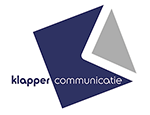De laatste tijd is er steeds meer discussie over het bestaansrecht van lineaire televisie. Zo zouden steeds meer kijkers afscheid nemen van het ouderwetse lineaire medium en overstappen naar betaalde VOD platformen als Netflix en YouTube. Maar verdwijnen er nu echt wel zoveel kijkers zoals vaak wordt beweerd? En is lineair kijken bij millennials echt helemaal uit zoals vaak in de media naar voren komt?
Uit de Nielsen cijfers van 2016 blijkt dat 11% van de kijkers in Europa betalen voor uitzendingen of VOD programma’s. En in landen als Nederland en het Verenigd Koninkrijk kijkt men gemiddeld zo’n 15 minuten per dag naar betaalde VOD diensten. En daarnaast kijkt men in Nederland gemiddeld 183 minuten (2016) lineaire TV per dag. In het Verenigd Koninkrijk is dat zelfs nog meer: gemiddeld 240 minuten per dag. Dus het aandeel betaalde VOD is nog niet erg groot in vergelijking met lineaire televisie, dat echt nog en massamedium is.
En dat is ook de reden waarom vloggers multiscreen gaan. De vloggers van het Nederlandse programma Katwalk over fashion, beauty en entertainment werd in 2016 eerst uitgezonden op RTL MCN en later kreeg het een eigen timeslot op de commerciële zender RTL5.
En niet alleen voor lokale spelers blijft TV een aantrekkingskracht houden. Ook internationale spelers willen graag hun content op televisie distribueren, zoals Facebook in 2017 aankondigde om video te willen aanbieden via een app op de set top box. Ook videoplatform Vice zendt bijvoorbeeld in Nederland en de VS via de kabel lineair uit.
Maar is er ook een omgekeerde beweging gaande, namelijk dat traditionele tv-omroepen hun programma’s gaan verspreiden via allerlei online platforms. Zo kondigde de Amerikaanse zender CBS in 2017 aan om tv-abonnementen te gaan aanbieden via Google. Vergelijkbare deals staan op stapel met zenders als FOX Sports FX en National Geographic Channel. En YouTube kondigde in juli 2016 aan dat ze YouTube Unplugged willen lanceren, die allerlei traditionele Amerikaanse zenders (waaronder CBS, ABC, ESPN) gaat distribueren. Dit zou ook een mogelijkheid kunnen zijn voor de Nederlandse omroepen. Maar vooralsnog hebben de Nederlandse omroepen ervoor gekozen hun zenders aan te bieden via o.a. het online platform NLziet.
Het online doorgeven van Nederlandse tv kanalen via allerlei internationale online platforms zou waarschijnlijk ook het lineair kijken door millennials kan vergroten. Zeker omdat er allerlei nieuwe “TV zenders” op online platforms (YouTube) ontstaan die kwaliteitscontent on demand en/of lineair aanbieden. Een videoplatform als Crackle brengt premium content met programma’s als Comedian in cars getting coffee en actieseries zoals Cleaners over een getraind team van huurmoordenaars. AOL originals brengt zelfs een talkshow – Parkbench – waarin Steve Buscemi met gewone New Yorkers praat in een park. The show won in 2016 zelfs een Emmy Award.
Opvallend is dat er steeds meer live videoplatforms op de markt verschijnen, waarnaar lineair wordt gekeken. Voorbeelden zijn het live gaming kanaal Twitch en het live kanaal van de serie Spongebob.
Het lijkt erop dat lineair televisiekijken bij millennials heeft afgedaan. Maar dat heeft waarschijnlijk meer te maken met het oubollige imago van de traditionele manier van tv-kijken via kabel of ether, gezien de opkomst van online lineaire kanalen die populair zijn bij millennials. Daarom zouden Europese omroepen in het algemeen en Nederlandse omroepen in het bijzonder erover moeten nadenken om hun zenders ook via YouTube te gaan distribueren. De kabelaars betalen de omroepen immers voor de distributie van hun zenders, en waarom zou YouTube de omroepen dan niet betalen voor zenderdistributie? Door distributie van traditionele tv-kanalen via YouTube zou het zo maar kunnen dat millennials “ouderwets lineair” gaan kijken naar de lineaire kanalen, maar dan wel online.
Charles Vaneker
Senior Research and Media consultant
